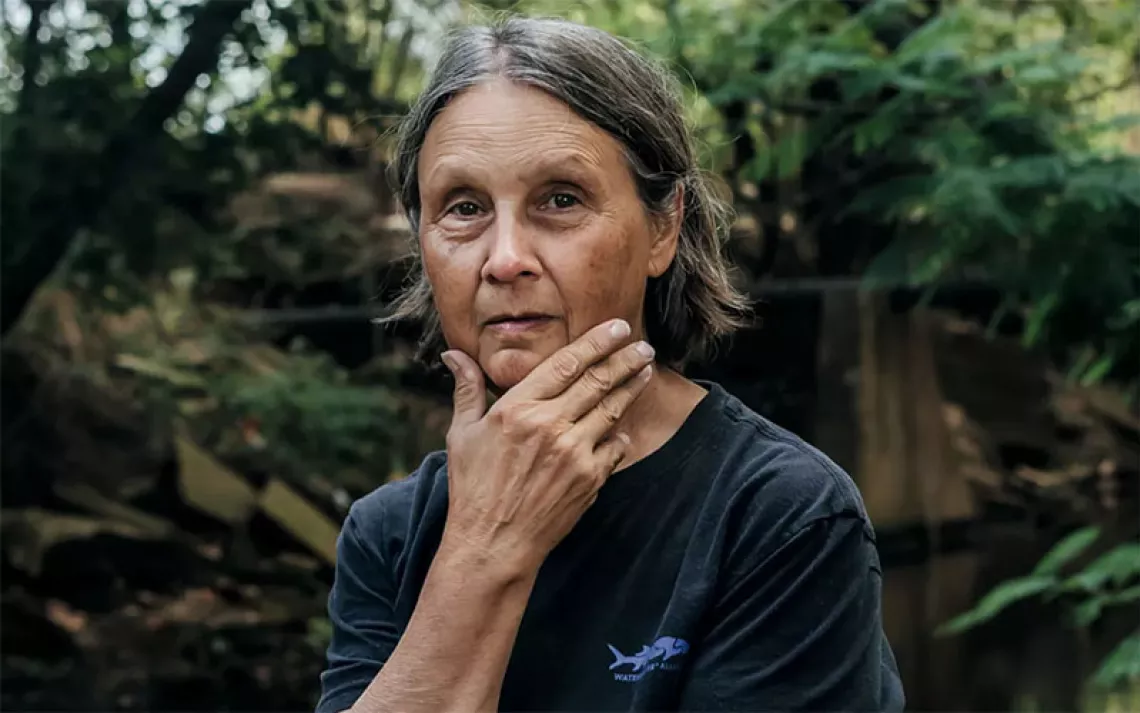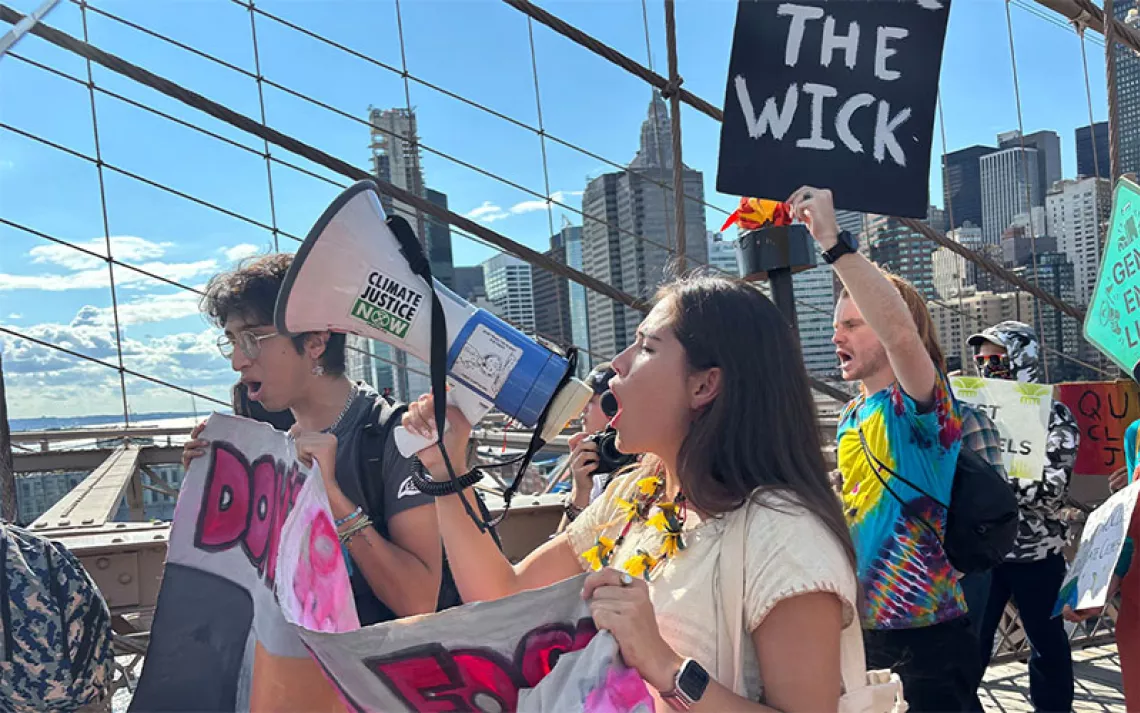Goldman Prize Honors Two for Working to Stop Lead Poisoning
Lead remains an all-too-common threat, from Flint to the Philippines

Photo courtesy of Goldman Environmental Foundation
For at least a couple thousand years, humans have understood that lead is dangerous. The Romans prized it as among the most protean and useful of elements, but they also knew that lead exposure could be dangerous. At the height of the Roman Empire, lead mining was banned in Italy; eventually, lead smelting was prohibited in the imperial capital with such hazardous work relegated to the provinces and vassal states (though the Romans kept using lead in their plumbing to disastrous effect).
Here we are, millennia later, and lead poisoning remains a threat to communities across the globe, for both wealthy and poor nations. We have the scientific and medical sophistication to identify and track the sources of lead exposure and to treat those who have been exposed, but we apparently still lack the socio-political sophistication to prevent this public health scourge.
This year’s Goldman Environmental Prize, widely considered the highest honor in the global environmental movement, recognizes two individuals who have taken extraordinary action to identify lead pollution in their communities and to prevent lead poisoning from occurring: LeAnne Walters from Flint, Michigan, and Manny Calonzo, from the Philippines.
By now you’ve no doubt heard about the lead poisoning in Flint, where as many as 100,000 residents were exposed to the toxin in their tap water beginning in 2014. That public health crisis might not have come to light had it not been for LeAnne Walters, one of the six 2018 Goldman winners.
In summer 2014, Walters, like many people in the largely poor and working-class city, noticed that her tap water was sometimes weirdly colored. A few months earlier, the city had transitioned to taking its municipal water from the Flint River, a move that raised some eyebrows, as the river was known to be heavily polluted due to its proximity to major automotive manufacturing. “Disgusting,” is how Walters describes the Flint River. “I don’t know why anyone would think getting your water from there is a good idea.” Walters noticed that her twin three-year-old boys both had rashes. Her 18-year-old daughter’s hair began falling out. In December 2014, her 14-year-old son fell ill.
Walters, a stay-at-home mom married to a U.S. Navy sailor, asked the city to test her water. The tests revealed lead levels that were off the charts: 104 parts per billion (ppb). The EPA’s level of concern is 15 ppb. Walters took her young sons to the pediatrician; when the doctor called her to give the results, Walters had what she calls a “mini nervous breakdown.” One of her sons had lead poisoning and acute anemia. “He was my child; he had just turned four,” she says. “I had researched lead and copper, and I had an idea of what it could cause, but to know definitively was a huge emotional moment.” Walters says she was “hysterical"; her husband had to pull her off the kitchen floor.
Then a kind of primal mama-bear instinct kicked in. “Don’t mess with my kids,” she remembers thinking. First, Walters and her husband started canvassing the neighborhood to warn their neighbors about the risk. Then she began making calls to city, state, and federal officials. Often she was greeted with official indifference. She spoke to the Flint mayor, who told her the city would take action, but then, according to Walters, “they never got back to me.” She dove into online research, and using public records determined that the Flint River water was especially corrosive. The city, she correctly surmised, had stopped using anti-corrosion measures in order to save money.
Finally, she got in touch with Miguel del Toral, a manager in EPA Region 5. At first, his questions seemed sort of condescending; Walter was, she says, “kind of a jerk to him.” But as del Toral began reviewing the data that she had compiled, the magnitude of what was happening in Flint hit him. “He was in total shock,” Walters says. “He was like, ‘Oh my God, they are breaking a federal law.’”
Next, Walters made contact with Marc Edwards, a professor of environmental and water resources engineering at Virginia Tech. Together, they worked up a plan to test the water in every zip code in Flint. Within three weeks they had gathered 800 samples; one had a lead level of 13,200 ppb—more than twice the level the EPA classifies as hazardous waste.
Walters and Edwards released their findings and showed that at least one in six homes in Flint had lead levels exceeding federal health standards. In October 2015, Michigan governor Rick Snynder said the city would stop using water from the river. A few months later the city declared a state of emergency and began distributing free bottled water.
Many observers agree the issue likely wouldn’t have reached the national spotlight had it not been for Walters’s perseverance. “Without [Walters] we would be nowhere,” Mona Hanna-Attisha, the head of pediatrics at Flint’s Hurley Medical Center, told Mother Jones. “She’s the crux of all of this.”
Today, the water in Flint is back on and, according to officials, safe enough to drink. But Walters is a changed person. “They’ve not done anything to rebuild our trust at all,” she says. “There is a PTSD mentality of drinking water from a tap.” She and her family continue to buy bottled water—a burden on their budget. And she is home-schooling her sons, who have delayed hand-eye coordination and speech development because of the lead poisoning. “I didn’t think this is where I would be in my life, but this is what happened,” Walters says. “I wasn’t an activist before this. People have to be willing to make a difference.”
On the other side of the planet, Manny Calonzo has also worked against the public health threat of lead poisoning. Unlike Walters, Calonzo is a veteran activist, having started his political advocacy during the Filipino pro-democracy movement of the Ferdinand Marcos regime. For many years, Calonzo was the president of the EcoWaste Coalition, a network of some 150 community, church, school, and health groups working on environmental issues.
In 2008, Calonzo launched a campaign to eliminate lead additives from paint. Even though the United States and other industrialized countries had banned lead paint in the 1970s, Calonzo suspected that Filipino manufacturers were still using lead, which helps paint dry smoother and faster. His group took samples and sent them for testing in a lab in India.
“When we saw the results, we were really shocked—it was kind of an eye-opener,” he says. The majority of the paint brands sold in the Philippines contained lead levels above 90 parts per million, the U.S. standard, and some 40 percent of samples had lead levels over 10,000 ppm. “We were appalled to learn that we were lagging behind in protecting children and other vulnerable groups from this human health risk.”
Calonzo and his organization began working with a range of stakeholders, including government departments and industry, toward a prohibition on lead paint. “There was no question that lead is dangerous and had to be removed,” he says. The key issues in the negotiations were the threshold limit and the phase-out time. Eventually, after two years of negotiations, in December 2013 the Filipino government announced new regulations banning the sale of paint that has above 90 ppm of lead. The rules went into effect at the end of 2016; today, more than 85 percent of the new paint sold in the Philippines has been certified as lead-safe.
Calonzo is now busy working with partners in India, Nepal, Sri Lanka, and Thailand to ban lead paint in those countries. He says that U.S. leadership on the issue is crucial: “It’s important for the United States to continue supporting the work of the global alliance, in order to spread and ensure that lead paint regulations are promoted and put in place in countries where there are no existing policies yet.
Here are the other 2018 Goldman Prize winners:
• Makoma Lekalakala and Liz McDaid from South Africa, who exposed the details of a $76 billion deal between the South African government and Russia to build as many as 10 new nuclear power stations throughout the country. Worried about the impacts of uranium mining and nuclear waste disposal, Lekalakala and McDaid barnstormed South Africa to raise awareness about the deal. In April 2017, the Western Cape High Court ruled that the deal was unconstitutional and invalidated the agreement.
• Francia Márquez, an Afro-Colombian woman who spearheaded a campaign against illegal gold mining in the La Toma region of Colombia. In 2014, Márquez led 80 women from her area on a 10-day, 350-kilometer march to the capital, Bogota, where they then engaged in weeks of protest. The protests spurred the Colombian government to crack down on illegal mining in La Toma and to create a national task force on illegal mining.
• Khanh Nguy Thi, a Vietnamese woman who’s careful research and engagement with Vietnamese government agencies prompted the country’s leadership to rethink its plans for more coal-fired electricity. In 2011, Nguy Thi founded the Green Innovation and Development Centre to promote sustainable energy development in Vietnam. That same year, the Vietnamese government published a country-wide electricity plan that called for 75,000 megawatts of coal-fired power by 2030. Nguy Thi spent years lobbying government officials to change their plans, and in 2016 the government outlined a new plan to review new coal plants and reaffirmed the country’s commitment to greenhouse gas reductions.
• Claire Nouvian, of France, founder of the BLOOM, an ocean advocacy group. In 2005, Nouvian’s organization launched a public campaign against Intermarché,a major French supermarket chain that also owns one of Europe’s largest deep-sea fishing fleets. Nouvian said that Intermaché ships were engaging in unsustainable bottom trawling techniques. In 2012, a French court ruled that Intermaché had made false advertising statements about the sustainability of its fishing practices. In November 2015, France—in response to pressure from BLOOM and other groups—agreed to a ban on all deep-sea trawling beneath 2,600 feet (or 800 meters).
 The Magazine of The Sierra Club
The Magazine of The Sierra Club



